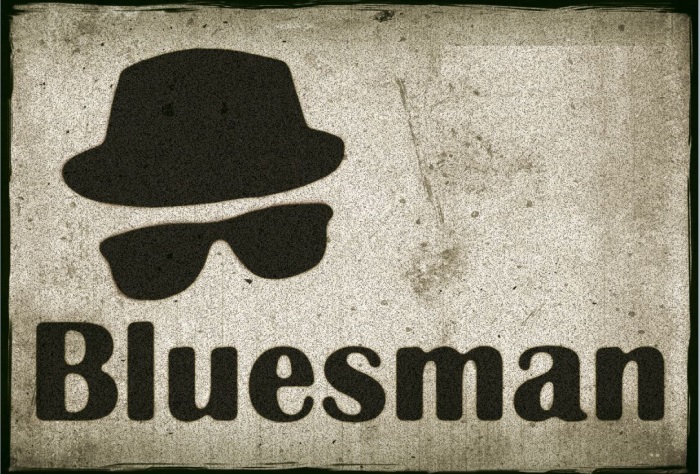My Amps for Harp
Over time, the demands for an amplifier also changes. The beginner wants a lot of bass and distortion, the amplifier must not be dynamic and has to roar. The experienced band member usually wants a versatile amplifier, with appropriate and convenient sound and volume. Certainly also the image and design plays a major role.
Harp players are very individual. Not everyone needs a powerful Bassman. Whoever likes the sound of an FX device, can save much effort and costs.
The Traditional Series
Poor Bluesman
The amp for tinkerer, a model for the modification of China-Champs - or the start of a new hobby. The result is at the level of the 800 € amps of the few major companies on the market. It is easy to adapt to personal taste, wild distorted to jazzy clean and you can learn, where the screws of the sound sit.
By the way, take a look at the Bugera V5 at the "Modifications" section. It's almost a harp amp, you won't get it cheaper.
Bluesman SE
Usually, you can hardly save money with a homemade amp, but with this one you can and a amp like this can not be bought. 15W, full tone stack, 2 gain stages, NFB switchable, FX socket to connect a stompbox, 9V power supply, corrected adjustable lineout. With complete blueprint for the amp and cabinet. These instructions may also serve as a model for your own creations.
Bluesman PP
The amp for everything. Due to the elaborate circuit it sounds soft and loud, usually motorized sufficiently with 30W, 2x10" speakers and still lightweight. Full tone stack, 2 gain stages, switchable FX at the front control-panel, path for guitar effects, inputs for bullet- and vocal-microphone with integrated impedance converter, adjustable lineout, 9V power supply. The masterpiece, I am actually quite proud of. Plans might come, it is a lot of effort and simply takes time.
The Modern Series
Harp players used to have a hard time with the technique, which is over now. Just plug in - play - and you're set! No Voodoo, no cat bones, no more old, heavy shit.... to connect modern and traditional technology is an interesting task - transistors are not evil per se.
Printed circuit boards help to save space, shorten connection paths and simplify the construction for the hobbyist. The disadvantages of the thin copper layer can be eliminated by good design of the conductor paths and complete tinning. The result is smaller, lighter, just as durable, makes fewer problems and even can do more. Only modifications might be difficult to do and the circuit board has to be removed for repair. But as long as nothing gets broken...
Brownie
The Brownie is a quiet amp. It was made to compete in a bar with acoustic instruments, eg. with a Chromatic and should bring a good sound at moderate volumes for the player to be able to practice even in urban areas. That's why he also got an mp3-input.
Redneck
Small format and a powerful sound due to great performance seemed promising. The 8" speaker is chosen consciously, I just did not want to make another "medium" amplifier. The integrated microphone works great and the speaker is sufficient enough for most goals. You get your own monitor and the sound over the PA is only a plug away.
El Gordo
If the guitarist likes to play loud here and then, El Gordo is your all-round carefree package. No FX devices, no cables, no power supplies. Just plug in and start playing. Sounds low and very loud, has a foot-switchable delay and the sound and standard routing are especially designed for Harp.
As big as a Blues Junior, 2kg lighter... and can be loud as hell.
